Earlier today, several ceremonies were performed and speeches given in Lapulapu, on the island of Mactan, just off Cebu in the Philippines. Dignitaries and ordinary people had come together to mark the quincentennial of the triumph of Lapulapu—the city’s namesake—over the Portuguese explorer  Ferdinand Magellan, working in the service of Spain, in the Battle of Mactan. Five hundred years ago, on April 27, 1521, the datu (essentially a local ruler) and some of his warriors sprang a major upset, if my use of a sports metaphor can be forgiven.
Ferdinand Magellan, working in the service of Spain, in the Battle of Mactan. Five hundred years ago, on April 27, 1521, the datu (essentially a local ruler) and some of his warriors sprang a major upset, if my use of a sports metaphor can be forgiven.
Although Lapulapu is a bonafide Filipino hero, the subject of statues all over the country, little is known about him. The only extant primary source that mentions him by name is that of Antonio Pigafetta, the Italian scholar who came along on what turned out to be the first circumnavigation of the globe. Lapulapu’s appearance, his words and manner, and his origins and religious affiliation are still debated by Filipino historians.
Nevertheless, the facts of this encounter are fairly straightforward. Magellan had been in what we now call the Philippines since March 16, long enough to have won an ally named Humabon—another datu. Magellan’s ships anchored half a mile from the beach at Mactan, and he led about 50 men ashore. They set fire to a few buildings, and Magellan made some audacious demands of Lapulapu. If you swear fealty to Humabon, acknowledge the king of Spain and pay tribute, you can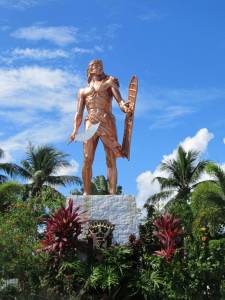 live, he said. Lapulapu was unimpressed and responded with taunts. Commanding much bigger numbers (perhaps as many as 1,500), he told his warriors to charge. Magellan soon fell under a hail of sword blows. His grisly death was not so different from what Captain James Cook would suffer in Hawaii in 1779.
live, he said. Lapulapu was unimpressed and responded with taunts. Commanding much bigger numbers (perhaps as many as 1,500), he told his warriors to charge. Magellan soon fell under a hail of sword blows. His grisly death was not so different from what Captain James Cook would suffer in Hawaii in 1779.
Some of the Europeans survived, enough to carry on a meandering journey under the leadership of Juan Sebastian Elcano. They made it across the Indian Ocean, around the southern tip of Africa (later named the Cape of Good Hope) and up to the Iberian peninsula. On a bedraggled vessel called Victoria, they pulled into Sanlúcar de Barrameda on September 6, 1522. Of the 240 who had set sail on five ships three years earlier, only 17 had made the whole 50,610-mile journey.
Let’s direct our attention back to the Philippine islands. During Magellan’s brief stay there, a notable event transpired. Pedro de Valderrama, the expedition’s chaplain, performed the first documented Catholic Mass in the Philippines on March 31, 1521, Easter Sunday. Two natives, Colambu and Siaiu, attended the Mass although they may not have been actual converts. However, ambiguity in Pigafetta’s diary has caused some doubt about just where that religious ceremony took place. Was it at Mazaua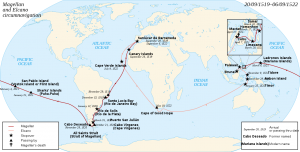 (now known as Limasawa) on southern Leyte or Masao, Butuan? Both have their adherents, and politicians in Limasawa and Masao have filed bills and resolutions insisting that Valderrama’s Mass happened here, not there. The National Historical Commission of the Philippines, taking the matter quite seriously, studied it in 1980, 1995 and 2008, finally concluding that Limasawa had the stronger claim.
(now known as Limasawa) on southern Leyte or Masao, Butuan? Both have their adherents, and politicians in Limasawa and Masao have filed bills and resolutions insisting that Valderrama’s Mass happened here, not there. The National Historical Commission of the Philippines, taking the matter quite seriously, studied it in 1980, 1995 and 2008, finally concluding that Limasawa had the stronger claim.
But wait! A Franciscan missionary and traveler named Odoric of Pordenone (1286−1331) is said to have performed a Mass in Bolinao, Panganisan 197 years before Magellan’s fateful clash with Lapulapu. The gutsy Odoric was dispatched in 1318, preaching the gospel in such places as Constantinople, Baghdad, Bombay, Ceylon, Malabar, Java and Peking. He did not get back to Italy until late 1329 or early 1330. While Odoric could give Marco Polo or the mythological Sir John Mandeville a run for his money, most scholars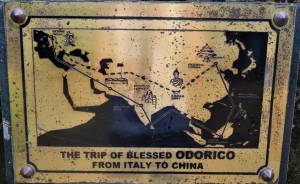 think he was never in the Philippines—notwithstanding the fact that a plaque outside Bolinao Church avers that he had performed the first Mass there in 1324.
think he was never in the Philippines—notwithstanding the fact that a plaque outside Bolinao Church avers that he had performed the first Mass there in 1324.
On somewhat firmer ground, we know that Magellan had his men erect a large wooden cross on a hill overlooking the sea; that, too, is uncertain. Had it been at Magallanes or at Triana? The NHCP chose Triana, specifically Saub Point. Soon thereafter, Magellan did something that was all too common in the age of discovery—he “took ownership” of the archipelago (7,600 islands consisting of 116,000 square miles) in the name of King Charles V and named it the Lazarus Islands. Not until 1543, when Ruy López de Villalobos was back with another Spanish expedition, did they get their name of the Philippines, in honor of King Philip II.
Regardless of the Mass performed by Valderamma in 1521, Christianity did not begin to take hold until Miguel Lopez de Legazpi got there in 1565. He would be the first governor-general of the Spanish East Indies (consisting also of Taiwan, Palau, the Caroline Islands, the Mariana Islands, and parts of Sulawesi and the Moluccas). A firm administrator, Legazpi had dual goals regarding spiritual affairs in the Philippines. The first was to convince the natives to abjure the pantheon of gods they had long worshipped; chief among them was an all-transcendent being called Bathala. The second was to roll back the influence of the Muslims who had planted themselves in Mindanao, Palawan and Sulu, with outposts in Luzon and Leyte. An Arabian named Karim Makhdum was the first Islamic missionary to the islands in 1380; the beautiful Sheik 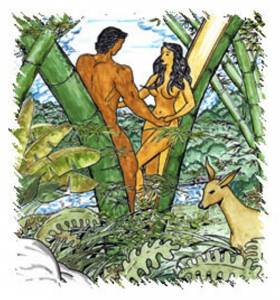 Makhdum Mosque in Tawi-Tawi is named after him. Muslim traders had been coming over from Indonesia, Malaysia and Borneo (specifically Brunei) well before that, so you see Legazpi had his hands full. Complicating the picture even further, there was a strong Hindu influence in and around Manila.
Makhdum Mosque in Tawi-Tawi is named after him. Muslim traders had been coming over from Indonesia, Malaysia and Borneo (specifically Brunei) well before that, so you see Legazpi had his hands full. Complicating the picture even further, there was a strong Hindu influence in and around Manila.
Spain’s 333-year hegemony in the Philippines began with Legazpi in 1565. Many Filipino writers and academics are ambivalent about the confluence of the sword and the cross. To them, these celebrations are wrought with dispute. They bristle whenever it is said that Magellan “discovered” the Philippines. The land and the people, obviously, had been there quite a long time before he arrived. President Rodrigo Duterte, too, has been rather scornful of the year-long events which, to some degree, glorify the country’s historical tyrants. There can be no doubt that the Spanish were guilty of violence, abuse and oppression (not to mention the removal of an enormous amount of wealth), and the role of the Catholic friars deserves to be highlighted. Negative perceptions of how the Filipino people were brought “under the church bells,” are dwelt upon in José Rizal’s novels Noli Me Tangere and El Filibusterismo.
doubt that the Spanish were guilty of violence, abuse and oppression (not to mention the removal of an enormous amount of wealth), and the role of the Catholic friars deserves to be highlighted. Negative perceptions of how the Filipino people were brought “under the church bells,” are dwelt upon in José Rizal’s novels Noli Me Tangere and El Filibusterismo.
Lapulapu, whose triumphant victory in 1521 is reenacted every April 27, spawned many legends. One held that he did not die but turned to stone and has been guarding the seas of Mactan ever since.

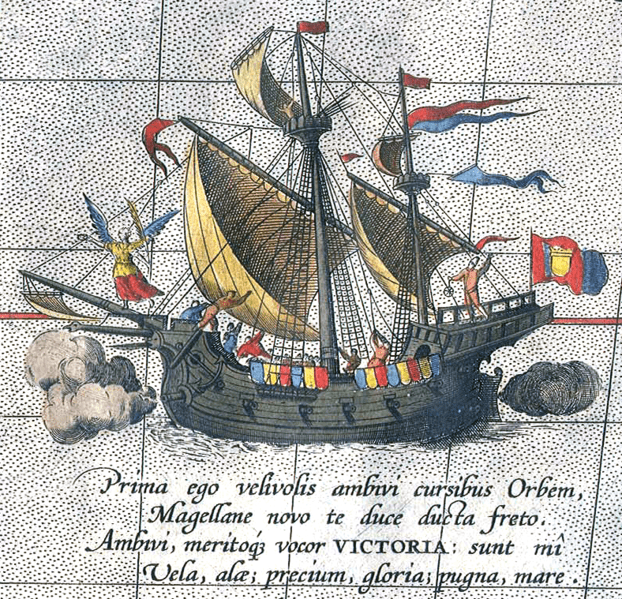
16 Comments
Wow! Thank you for writing about our history Rich. There’s still a lot to know about Spanish colonialism in our country and you did it to me in a concise but precise way. And I am glad to be lived at once in my life in Lapu-Lapu city that named after the first Filipino hero. Honestly, this is the first time I heard about Franciscan Odoric of Pordenone coming to the country. Confusions about our history has something to do with lack of Filipino historians and maybe for among us lack of interest of our history. Thanks again Rich you really are bestt!
I thank you very sincerely for your comment, since you are a native and I am not. I hesitated to write it for that reason. Who am I, and how dare I pontificate about Philippine history?? But I just tried to be honest and fair.
Great historic synthesis!! As always, dear Richard, you surprise us with your wide-scope knowledge and interests.
Thank you, Dr. Limpias. You are one of my inspirations as a person with “wide-scope knowledge and interests.”
Great read. I imagine that took one heck of a lot of research – and finding the sources is a major accomplishment in itself. Enjoyed the article.
Thank you, Dr. Johnson. The info is out there and not too hard to find….harder part is putting it all together.
Richard:
A great article with outstanding research. I can’t imagine how difficult it was researching the project especially with a number of different theories. Like many of your pieces, I learned a lot about the subject – this time the history of the Philippines and Magellan’s influence. Thank you.
Rex
Rex…well, the info is available on the Internet….one just has to go and look for it, and then process it somehow…and make a few judgements about which sources are more trustworthy
It’s amazing you know the history of phippines and writing the article about that.
Ha-sook, I have been there twice and have many friends and loved ones in the islands. And by researching and writing, I learn more. Learning is one of the great pleasures in my life.
Thank you so much for opening up my mind to so much so wisely & clearly. My first roommate in college was from the Philippines.
You are quite the historian.
First, thank you very much for writing this.It’s brief but well researched. It must be a little challenging to write about Philippine history because there’s a lot of information that we Filipinos were not sure if its vital but sometimes turns out plays significant and pivotal scene in the history. What’s even more amazing is that you wrote it with deep respect to the pre-colonial Philippines. At this day and age of modernity and gadgets, very few people especially the Gen X aren’t that much interested in the History. But this kind of writing can attract the young readers too.
Bree, I thank you first for reading my story and then for your comments. Yes, my respect for the Filipinos and Filipinas goes deep. I just wonder what this country would be like if the Spaniards had not come along and done a drastic social reorganization and extricated untold amounts of wealth. I have said before that many or most of your problems derive from the Spanish. They did a lot of damage in 333 years. On the other hand, I shudder to think of the Mohammedans taking full control, and it was in the process of happening with Magellan came on the scene.
Richard-This was just excellent-thanks for writing and sharing it. I’ve been to the Philippines in my Navy days. Sailing through the thousands of islands was just beautiful. I’ve known, like most Americans, many Filipinos over the years and hold a very high opinion of them.
Mr. Richard, thank you for writing this wonderful article. It made me refresh on what I learned about Magellan from his arrival to the Battle of Mactan in college, and also it is very timely as this year marked the quincentenary of Christianity in the Philippines. About Odoric, it was the first time I heard about him as no book or subject even in college has mentioned about him, thus bringing him to obscurity. Nevertheless, Magellan’s arrival and death produced two things: One, the gift of Christianity (that’s why PH is the only Christian-dominant country in Asia), and two, the Filipino awareness about independence, (which was realized 333 years later). Overall, the article is a must-read and an eye-opener for those who are curious and interested about this particular part in Philippine history.
You gave life to how Magellan and Lapu lapu were back then, it presented fresh facts but was still accurate to some old article about them which makes it informational. Also this is not boring to read for some who are lazy to review the history of these two people, so as a fellow filipino I sincerey thank you uncle for the effort of writing this article .
Add Comment